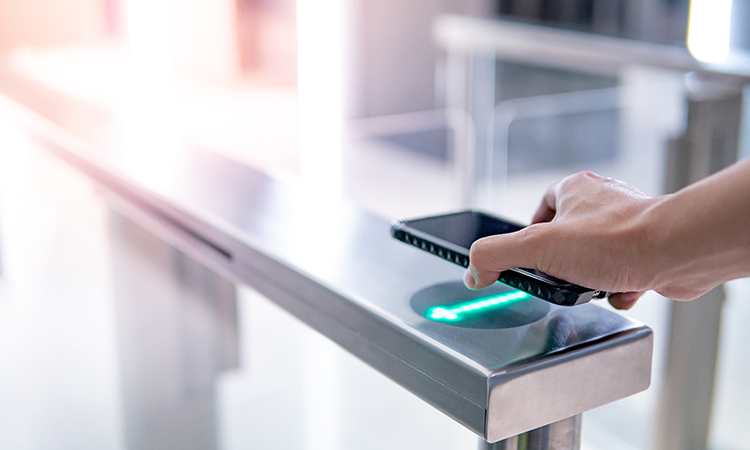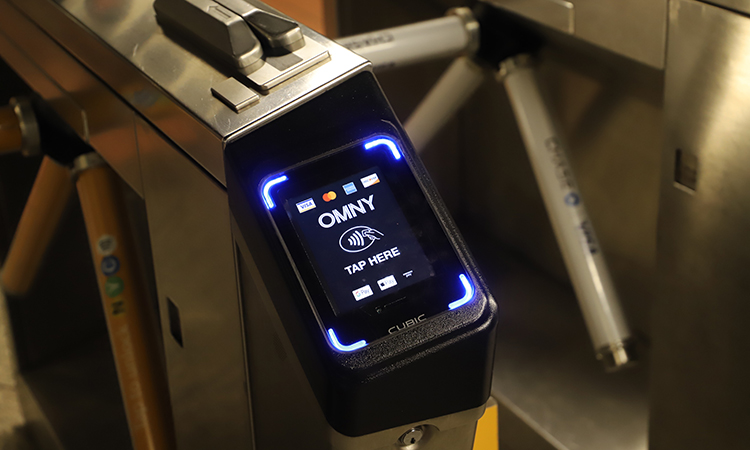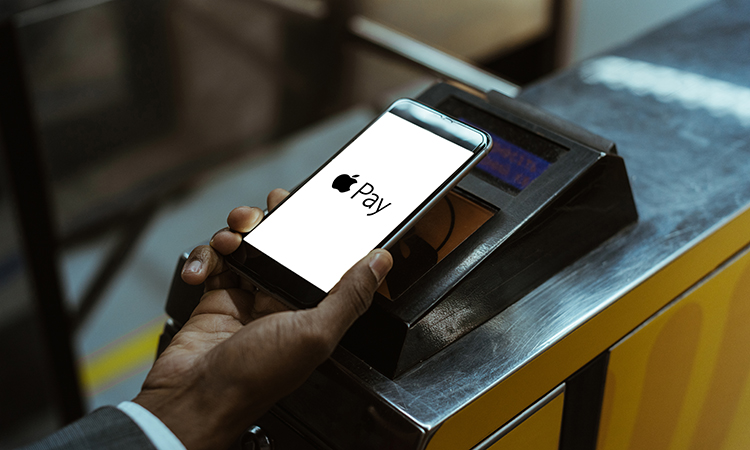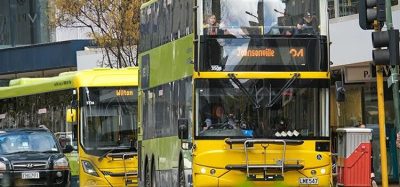Payment apps, CiBo, and biometrics: what’s next for mobile ticketing?
- Like
- Digg
- Del
- Tumblr
- VKontakte
- Buffer
- Love This
- Odnoklassniki
- Meneame
- Blogger
- Amazon
- Yahoo Mail
- Gmail
- AOL
- Newsvine
- HackerNews
- Evernote
- MySpace
- Mail.ru
- Viadeo
- Line
- Comments
- Yummly
- SMS
- Viber
- Telegram
- Subscribe
- Skype
- Facebook Messenger
- Kakao
- LiveJournal
- Yammer
- Edgar
- Fintel
- Mix
- Instapaper
- Copy Link
Posted: 15 January 2021 | Jaspal Singh - UITP | No comments yet
Jaspal Singh, Senior Expert – IT and Development at UITP, explains how mobile ticketing technologies are advancing and what comes next in their evolution.


Nowadays, the challenge starts with trying to understand closed-loop versus open-loop, card-centric versus system-centric, prepaid versus post-paid, account-based ticketing, open payment, SIM-centric mobile ticketing and so on. Ticketing systems have evolved significantly over the past 100 years.
Growing urbanisation, rising consumer expectations, and changing demographics together with declining government funding streams have created a perfect storm in the traditional provision of service for public transport. Private innovation led by venture capital funding has brought a new focus to the value of mobility. Public transport was and is still in some places traditionally a function of government, though sometimes offered through contract service to private providers, but it is receiving new attention as technology creates potential business models attractive to new players.
While adding complexity to the system, private mobility service providers offer new alternatives that could expand the user base of public transport. The potential danger in this is that the role of government to make decisions in favour of the public good could be abdicated in favour of capital market opportunities. The effect on the environment, congestion, health, and quality of life must be considered as part of a holistic, people-centred solution.
Within this array of challenges lies hope in a future that improves on the lives of all citizens. Ticketing is no longer a simple part of the public transport experience. It is what enables freedom of movement across modes and borders. With emerging models such as MaaS, account-based systems can connect movement in a region with new opportunities for reward programmes, loyalty toward preferred modes, and access to recreation, entertainment, commerce, and employment. Shifting ‘service consumed’ business models among providers do not currently align to types of available funding options. However, with every challenge there is equal opportunity, the specifics of which are outlined through the remainder of this article.


The COVID-19 pandemic has made mobile ticketing even more important than it was before.
Ticketing and payment systems are key elements of a public transport system. The huge installed base such as infrastructure (front-end devices and back office) or fare media are embracing various generations of technologies and architectures. New demands for both an improved customer experience (multimodality, interoperability, etc.) and maintaining new public transport business models such as MaaS, DRT and others are requiring future‑proof solutions which must be easy and fast to use and accessible to all, regardless of the medium they carry with them.
This all leads to two key challenges: firstly, understanding what technologies are available and required; and secondly, how to handle the transition to a new environment. Put simply, cities are shifting from media-based ticketing to account-based ticketing.
Investment in a new ticketing system is a big challenge for transit authorities around the world, as they are looking to make an investment in a system which will not be obsolete within the next 10-15 years.
What’s more, the COVID-19 pandemic is accelerating the adoption of existing trends rather than creating an explosion of new ones. This also applies to public transport and in particular to ticketing, as the adoption of open payment, mobile ticketing, ABT and MaaS is accelerating. The difference is that now cities have the urgency to adopt them for sanitary and business continuity reasons. Contactless and cashless ticket purchase has never been more important. The investment in ticketing is shifting from an infrastructure focused system to a consumer’s mobile or other biometric system.
What follows are some of the new innovations in ticketing which we could see used around the world in the near future:
Open-loop cEMV ticketing
EMV stands for Europay, Mastercard and Visa – the companies who developed the technical specifications for this global payment standard. From a technical point of view, it is a method that makes sure smartcards and payment terminals are compatible. The card-based EMV standard has been around for years, but is now shifting towards contactless.
It is important to note that EMV is just the security scheme of credit cards that now has evolved to be used in debit cards and phones. Many cities around the globe have introduced contactless EMV (cEMV) systems. In June 2018, Milan introduced cEMV payment in all metro stations, enabling those in possession of a contactless-enabled credit card access without the need to buy a ticket. During the pandemic, many cities shut down their ticketing systems as they did not have contactless features. The acceleration of cEMV implementation happened around the world. Visa reported 187 per cent growth in contactless payment with 500 active transit projects.
XiXo – next-gen ticketing
XiXo makes mobile ticketing even easier to use for all customer groups and offers the option of reacting to the current situation with innovative tariffs.
With XiXo it becomes easier and more comfortable than ever for passengers to get to their destination. However, there are many unaddressed questions, such as:
CiCo, CiaCo, CiBo or BiBo: what fits best and when?
What are the advantages of XiXo for public transport operators and passengers?
What are the challenges and practical solutions?
With the Check-in/Check-out (also called Tap-in/Tap‑out or Touch-in/Touch-out) method, the passengers need to present their fare media or token to a specific media acceptance device (MAD) or validator that uses a short-distance reader to check the passenger in to the transport vehicle/network. In the case of BiBo schemes, the physical validation infrastructure within transport vehicles automatically detects the appearance and disappearance of a specific electronic token carried by passengers, without them needing to take any specific action. It enables a truly “hands free” travelling experience. This can be done either using Long-range RFID or Bluetooth Low Energy (BLE) beacons.
Although many cities aspire to shift to BiBo schemes in the next few years, they are only suitable for use in honour-based, non-barred transport systems, where passengers don’t need to prove their ticket availability. Enforcement of the payment is either fully honour-based or by random inspection. An alternative scheme to consider before a full rollout of BiBo is Check-in/Be-out (aka Assisted BiBo). Instead of fully automatic check-in, the CiBo scheme requires passengers to confirm within the smartphone application that they have started their journey. Check-out is recorded automatically. In 2019, RMV Switzerland launched a BiBo pilot with Fairtiq for a trial group of 1,000 passengers.
Payment app
Transit agencies are trying to ensure that passengers can use public transport without additional hurdles. They do not have to install an app first or buy a smartcard, they can simply use a medium that they already possess and are familiar with, and they don’t have to worry about potentially unused credit balances.
Apple is working with many transit agencies which allow the use of Apple Pay for transit with Express Transit Mode, i.e. enabling users to pay without unlocking their iPhone or Apple Watch. They recently launched systems in Hong Kong (Octopus Card) and Japan (Suica or PASMO) etc. In other countries like Australia, Singapore, Canada and Russia, Apple Pay can be used for public transit without Express Transit Mode and users are required to authenticate the transaction using Face ID, Touch ID, or passcode. There is also the emergence of third-party apps like Uber that allow payment for public transit.


Apple Pay’s Express Transit mode makes it even easier for iPhone or Apple Watch users to pay for transport using their device.
Biometric ticketing
Biometrics are emerging as a new solution for contactless and seamless authentication for public transport. Companies around the world are using different body features such as iris and face recognition, voice, vein patterns, fingerprints, and heartbeat for different functions like security, verification, surveillance, attendance, and payment systems. Biometrics has the potential to change ticketing in buses, trains, airport check-in and so on. Perhaps the biggest advantage of this technology is the improvement in efficiency and convenience.
Some of the key pilots of biometrics in public transit include the facial recognition system implemented by Shenzhen Metro. The Osaka Metro (Japan) started testing facial recognition gates on the subway in December 2019. Similarly, Eurostar is planning to launch face verification for international travellers from London to Continental Europe by March 2021.
There are also certain concerns with biometric technologies, mainly related to privacy and data security. Thus, the adoption of biometrics has been a little slow in mass transportation. However, new palm vein technology could ensure better security and accuracy for ticketing systems around the world.
Similarly, FalconPro Technology is developing a tokenless, large-scale palm-based biometric identification solution for mass transportation and payments.
The way forward
The world of ticketing is evolving quickly and the key challenge for transit agencies is to find out how some of the more fanciful solutions can be implemented cost effectively at a benefit for the user.
Various proven concepts and solutions exist in the market already. For a local public transport service provider, a state‑of‑the-art ticketing system must be flexible, open and expandable, as well as economical: flexible for the easy introduction of fare changes and to shorten time-to-market for new fare products, which meet future market demands; open and expandable for the easy integration of new modes, business models, schemes, media, services, vendors and sales channels, as well as for geographic and organisational expansion; and economical in order to offer a changing demand for lower OPEX/CAPEX.
The use and introduction of standards, open interfaces, open access to API’s and multi‑vendor model options are crucial to achieving these goals. All around the world, ticketing systems based on open standards and open APIs, with the integration of open-loop contactless cards, contactless EMV credit cards, and mobile NFC, are forming an environment which offers both the local service providers and their customers the affordable, secure and convenient service they are expecting.
Related topics
Infrastructure & Urban Planning, Multimodality, Passenger Accessibility, Passenger Experience, Public Transport, Ticketing & Payments
Issue
Issue 4 2020
Related organisations
Apple, International Association for Public Transport (UITP)








